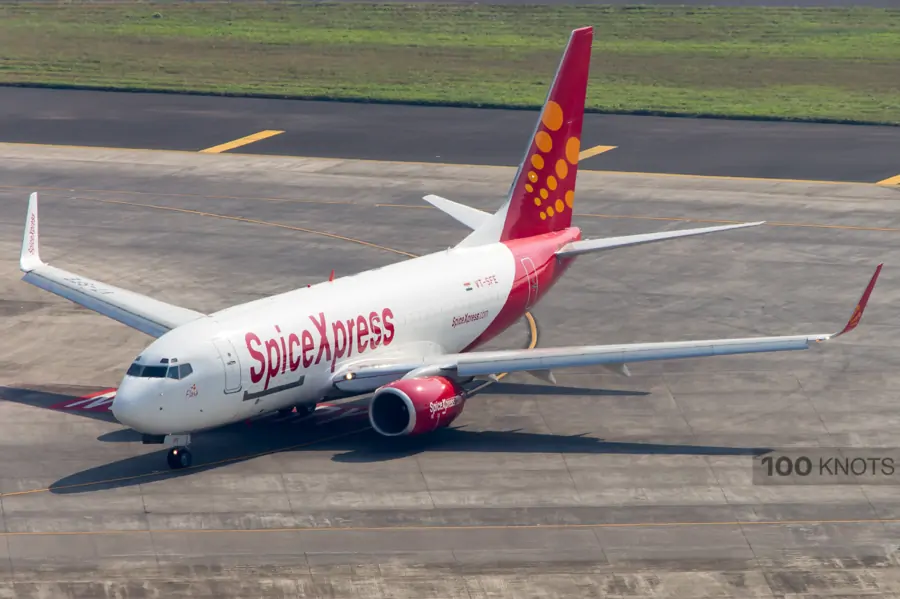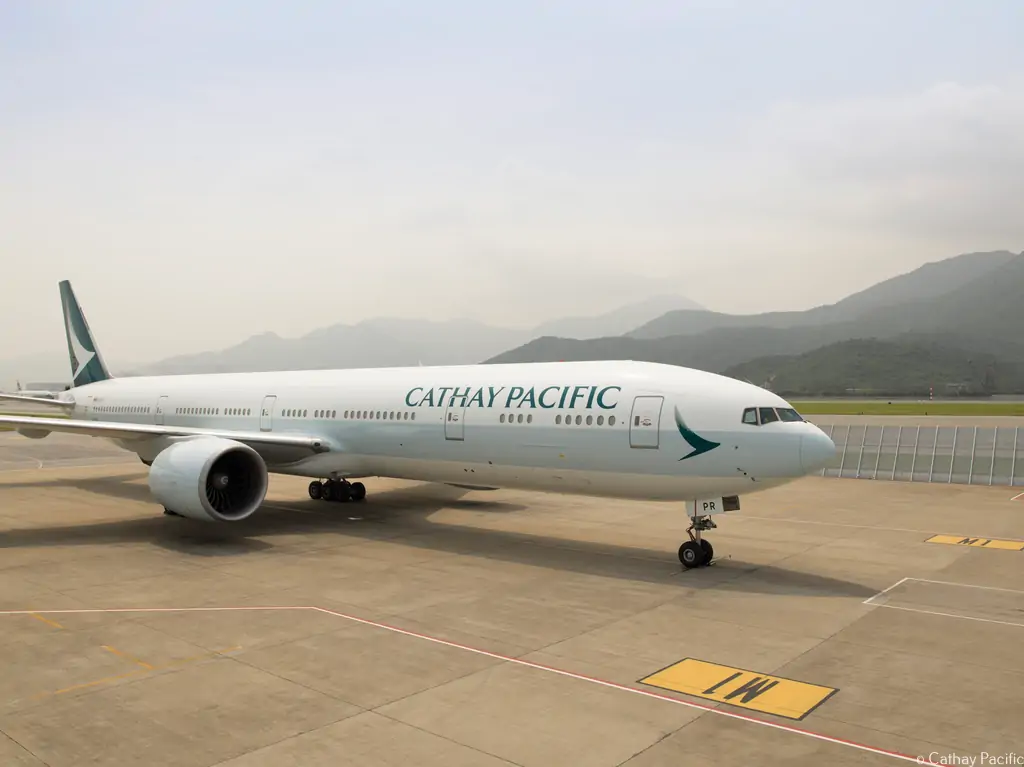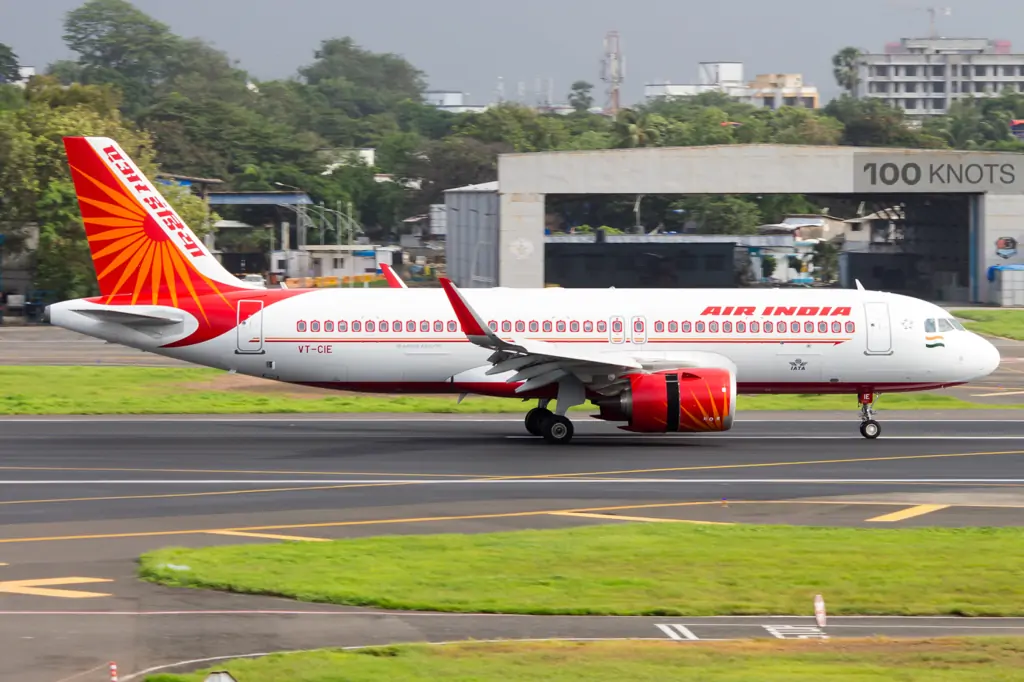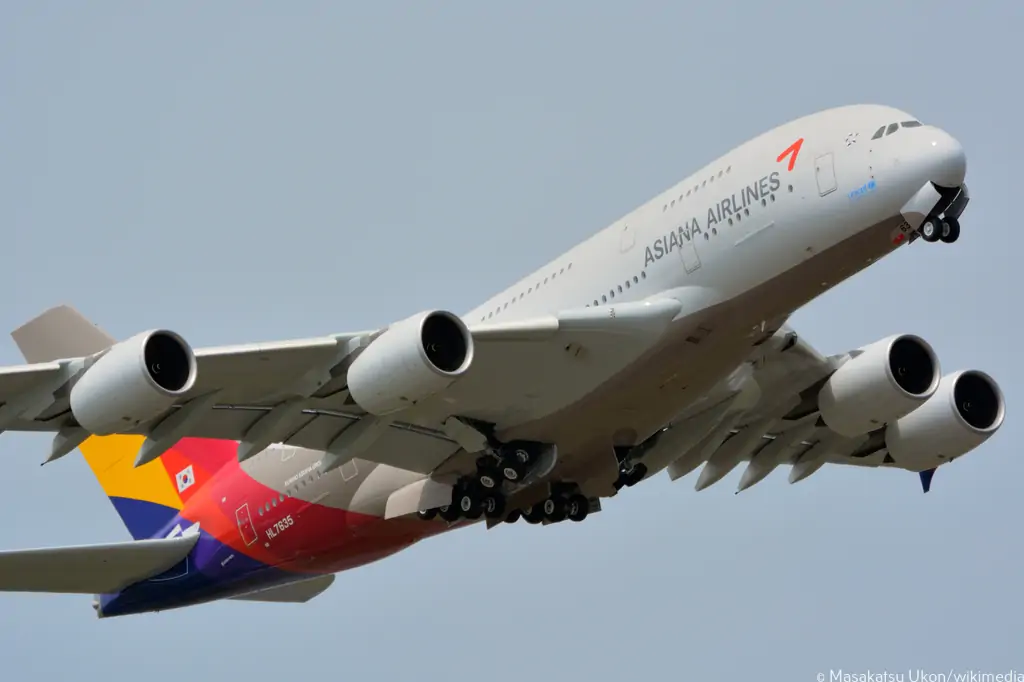Senior pilots play an important role in an airline. These seasoned pilots have a wealth of experience and expertise that is critical for upholding the highest levels of safety and operational efficiency. A combination of variables, however, has resulted in a dramatic decrease in the number of senior pilots at Cathay Pacific.
Present Scenario
It goes without saying that during the COVID-19 epidemic, airlines throughout the world faced one of, if not the, most difficult challenges. In March 2020, the world came to a halt as airports were devoid of people and aircraft were parked for an undetermined amount of time. Cathay Pacific had faced some of the most stringent and lengthy COVID-19 travel restrictions of any jurisdiction on the planet. Many of its pilots left during that time and continue to leave at this moment.
A pilot, who did not want to be identified, told the Post that every minute less work meant big losses for pilots. "In the past, if I was given 10 hours of work on that day, I would be paid for 10 hours." However, we are now only paid by the minute, from when the wheels move to when they stop. For captains, a minute’s effort is worth several hundred dollars. That's an enormous difference."
Reasons for Pilot Attrition
Impact of the COVID-19 pandemic
The 2019 COVID-19 pandemic has had a significant influence on the worldwide aviation sector. Due to travel restrictions, lockdown measures, and a decline in passenger demand, Cathay Pacific, like many other airlines, saw a severe reduction in flight schedules. As a result, the airline was forced to conduct layoffs and furloughs, resulting in the departure of several senior pilots.
Retirement of Senior Pilots
Cathay Pacific has been grappling with the retirement of senior pilots in addition to pandemic-related problems. Pilots reach an established retirement age due to aviation regulations and limitations on age, resulting in a natural attrition of experienced aviators. Furthermore, the move to newer aircraft and technology has caused some senior pilots to retire prematurely, maybe because they are less willing to adapt to the changes.
Lack of Pilots and Greater Competition
For some time, the aviation industry has been facing a global pilot shortage, which has increased competition among airlines for competent pilots. Other regional and international airlines have been aggressively recruiting pilots, providing attractive wage packages and improved work-life balance possibilities. Cathay Pacific is now operating in a tough climate, making it difficult to retain senior pilots.
Cathay Pacific's Implications
The departure of senior pilots has far-reaching consequences for Cathay Pacific.
Operational Difficulties
The airline's capacity and flight frequency have been lowered due to a reduction in the number of senior pilots. Because there are fewer experienced pilots available, the remaining pilots face an increased workload, which might lead to fatigue and reduced safety. Furthermore, the loss of senior pilots has resulted in adjustments to flight routes and destinations, which have impacted the airline's operational efficiency.
Loss of Training and Experience
Senior pilots leaving Cathay Pacific represent a loss of vital institutional expertise. This might have an impact on the airline's pilot training programmes as well as its ability to maintain strong safety standards. The experience gap left by senior pilots puts additional strain on new pilot training as the airline works to overcome the knowledge transfer and experience shortfall.
Customer Perception and Reputation
Senior pilot attrition can have a detrimental influence on Cathay Pacific's brand image and customer trust. When picking an airline, customers frequently respect the knowledge and skill of pilots. Passengers may be concerned about the overall pilot experience and the airline's capacity to assure safe and seamless travel if top pilots leave. This loss also puts Cathay Pacific at a competitive disadvantage in comparison to other airlines with a more experienced pilot team.
Measures Taken by Cathay Pacific
Recognizing the importance of tackling the pilot attrition problem, Cathay Pacific has put in place a number of initiatives to reduce the impact and retain pilots.
Retention Initiatives and Incentives
Cathay Pacific has increased its remuneration and benefit packages in order to recruit and retain pilots. The airline has prioritised work-life balance efforts, ensuring that pilots have adequate rest intervals and time off to avoid burnout. Cathay Pacific also provides training and professional development opportunities to encourage pilots to stay with the firm and advance in their careers.
Strategies for Recruitment and Training
To solve the pilot shortage, Cathay Pacific has formed partnerships with flying schools and academies to attract and educate new pilots. These collaborations aim to discover and develop potential aviators, paving the way for them to join Cathay Pacific's pilot ranks. The airline has also established accelerated training programmes to speed the training process and more quickly fill pilot vacancies.
Addressing the Impact of COVID-19
Cathay Pacific has devised thorough recovery procedures in order to recover from the effects of the COVID-19 pandemic. As travel restrictions relax and passenger demand rises, these plans include gradually reinstating airline schedules. These plans include a staged rehiring of pilots to ensure that the airline can satisfy operational needs while taking into account the unpredictable nature of the industry's recovery.
Future Prospects and Industry Trends
Looking ahead, Cathay Pacific's loss of senior pilots underscores wider industry trends and concerns that airlines must address.
Projection of Pilot Scarcity
Demographic trends and a wave of pilot retirements are projected to intensify the pilot shortage situation in the coming years. To overcome these shortfalls, airlines will need to build comprehensive programmes to recruit and retain fresh talent. Furthermore, technical improvements and the launch of new aircraft will necessitate a distinct skill set for pilots, adding to the difficulties of pilot recruiting and training.
Pilot Roles and Automation
Automation and the use of artificial intelligence in aircraft systems are advancing in the aviation sector. While these technologies aim to increase safety and operational efficiency, they also raise concerns about the role of pilots in the future. Pilots will need to modify their skill sets and take on additional supervisory and decision-making roles as automation increases.
Initiatives and Relationships at the Industry Level
To address the worldwide pilot shortage, airlines, regulatory authorities, and industry stakeholders must work together. Standardizing pilot training and certifications can expedite the pilot recruiting process while also ensuring uniform skill levels throughout the sector. Collaborative projects may also address diversity and inclusion among pilots, giving aviation a more accessible and inclusive career path.
Conclusion
Cathay Pacific has faced severe issues as a result of the loss of more than half of its senior pilots since 2019. The airline understands the significance of keeping skilled pilots and has put in place a variety of initiatives to manage pilot attrition. Cathay Pacific intends to reduce the effects of this attrition and preserve operational excellence by delivering competitive incentives, concentrating on recruiting and training methods, and managing the impact of the COVID-19 pandemic.
With Inputs from South China Morning Post
Read next
Cathay Pacific’s Free Ticket Campaign Extends to the Indian Subcontinent and UAE
Abhishek Nayar
17 May 2023

Cathay Pacific is pleased to present the "World of Winners" campaign, an initiative that celebrates the spirit of exploration and adventure, as part of its continued commitment to providing extraordinary travel experiences. Cathay Pacific hopes to inspire travelers to go on unforgettable travels and experience the delights of this vibrant region by providing the chance to win a free round-trip ticket to Hong Kong. On May 22nd, the campaign will be launched simultaneously in India, Bangladesh, Nepal, and the UAE, creating a buzz of excitement among travelers in these countries.
Overview of the Campaign
The Campaign's Purpose and Scope
The "World of Winners" campaign's major goal is to convey thanks to Cathay Pacific's loyal customers while also inviting new travelers to enjoy their world-class services. Cathay Pacific hopes to enhance its footprint in India, Bangladesh, Nepal, and the UAE by organizing this campaign and fostering deeper connections with the local populace.
Why the Indian Subcontinent and UAE
Cathay Pacific has deliberately chosen India, Bangladesh, Nepal, and the United Arab Emirates as target markets for its "World of Winners" promotion. These nations are well-known for their lively cultures, expanding economy, and rising travel desires among their citizens. Cathay Pacific believes that by providing this one-of-a-kind opportunity to travelers in these nations, it will be able to establish long-term connections and efficiently meet their travel needs.
Current Scenario
Cathay Pacific has announced that its "World of Winners" campaign will be launched shortly in India, Bangladesh, Nepal, and the United Arab Emirates. The airline will give away 5,590 round-trip tickets to Hong Kong, and the promotion will go live in both countries on the same day, May 22nd. Cathay Pacific's Regional General Manager for South Asia, the Middle East, and Africa, Rakesh Raicar, stated, "As the region's leading airline, we are proud to welcome visitors to experience the best of Hong Kong." Hong Kong offers cultural immersion for lone visitors, the greatest theme parks for families, and an effervescent nightlife for groups of friends. All of this is complemented by outstanding airport facilities and infrastructure, resulting in a smooth travel experience. Through this promotion, we intend to provide our clients with an exciting opportunity to board our aircraft and immerse themselves in the lively culture and diverse experiences that Hong Kong has to offer."
The "World of Winners" campaign begins on May 22nd and concludes on May 28th at 12:00 p.m. local time in India, Bangladesh, Nepal, and the UAE. Prizes must be redeemed between June 7th and July 6th, and winners will be announced on June 7th. The offer is valid for travel between June 7th, 2023, and March 6th, 2024.
Benefits of Campaign Participation
Opportunity to Win a Free Round-Trip Air Ticket to Hong Kong
The "World of Winners" campaign offers participants the opportunity to win a free round-trip flight to Hong Kong. Imagine boarding a Cathay Pacific aircraft and knowing you are about to embark on an unforgettable voyage to a city that seamlessly amalgamates tradition and modernity. Hong Kong offers a kaleidoscope of experiences that are sure to leave a lasting impression, from exploring renowned landmarks like Victoria Harbour and The Peak to indulging in exquisite cuisine and experiencing the bustling marketplaces.
Exploring Hong Kong as a Travel Destination
Winning a round-trip ticket to Hong Kong opens up a world of opportunities. Hong Kong caters to all types of travelers, whether you are a culture aficionado, a shopaholic, a gourmand, or an adventure enthusiast. Dive into the vivid street life that defines the city, uncover hidden jewels in its bustling neighborhoods, and immerse yourself in the enthralling energy that pervades every corner. Hong Kong promises a memorable experience full of surprises and delights, from historic temples to contemporary skyscrapers, tranquil hidden parks to bustling nocturnal bazaars.
Premiere in India
The debut of the "World of Winners" campaign in India has generated quite a stir among travel aficionados. To participate, Indian citizens must go to the official campaign website and follow the easy procedures. Once you have finished the entry procedure, you'll be eligible to win a round-trip flight to Hong Kong.
Rollout in Bangladesh
The debut of the "World of Winners" campaign in Bangladesh has sparked interest among travelers. Bangladeshis can participate by visiting the campaign's official website and following the instructions. By completing the entry procedure, you will be eligible to win a round-trip flight to Hong Kong.
Launch in Nepal
The debut of Cathay Pacific's "World of Winners" campaign is widely anticipated in Nepal, which is recognized for its magnificent landscapes and rich cultural legacy. Nepalese citizens can take part in the campaign by visiting the official website and following the instructions. You may win a round-trip flight to Hong Kong by completing the entry process.
Implementation in the UAE
The debut of Cathay Pacific's "World of Winners" campaign is keenly anticipated in the United Arab Emirates (UAE). Residents of the UAE can join by visiting the campaign's official website and following the instructions. By completing the entry procedure, you will be eligible to win a round-trip flight to Hong Kong.
The Campaign for Cathay Pacific's Importance
Increasing Customer Engagement and Brand Awareness
The "World of Winners" campaign is critical to increasing brand recognition and interacting with Cathay Pacific's devoted customer base. Cathay Pacific exhibits its commitment to providing excellent travel experiences and expresses gratitude to its customers by providing such an exciting opportunity. This programme fosters brand loyalty and encourages customers to select Cathay Pacific for their future travel requirements by creating good connections with the airline.
Expanding its Customer Base in the Target Countries
Cathay Pacific intends to develop its client base in these thriving regions by notably targeting India, Bangladesh, Nepal, and the UAE. The "World of Winners" campaign connects with potential consumers by exhibiting the airline's offerings and tempting them to pick Cathay Pacific for their journey to and from Hong Kong and beyond. It provides a chance to capitalize on the expanding travel desires of people in these nations and build long-term ties.
Conclusion
Cathay Pacific's "World of Winners" campaign is poised to create an impression in India, Bangladesh, Nepal, and the United Arab Emirates. Participants are asked to go on an exceptional voyage filled with remarkable experiences in exchange for the chance to win a free round-trip flight ticket to Hong Kong. The campaign not only demonstrates Cathay Pacific's dedication to its customers, but it also symbolizes the airline's mission of producing unique travel experiences. So do not pass up this fantastic opportunity to experience Hong Kong's vivacious city while creating lifelong memories.
Read next
Air India aims to operationalise an engineering warehouse near Delhi airport next month, which will help resolve aircraft defects faster and indicated that Go First pilots, are looking to join the airline. Under the ownership of Tata Group, loss-making Air India is working on reviving the airline and among others, is aggressively hiring pilots and cabin crew as well as making various technological upgrades.
In a message to employees on Friday, Air India CEO and MD Campbell Wilson said the airline has finalised an agreement for setting up a 57,000 square feet engineering warehouse near the airport in the national capital. "An agreement for a new 57,000 sq ft engineering warehouse near Delhi Airport was reached. It aims to be operational next month, giving us more proximate access to and better control over our aircraft spares so we can resolve defects faster," he said.
Before the Tatas took over, Air India frequently had trouble keeping up with necessary aircraft maintenance and repairs. Due to a lack of spare parts, many of its aircraft were even grounded for extended periods. With the new facility, the airline hopes to address problems like plane defects and improve operations expeditiously.
Details about the investment for the facility could not be immediately ascertained. Against the backdrop of Go First shuttering operations and filing for voluntary insolvency resolution proceedings, Wilson said Air India took various "rapid actions", including helping a student group stranded in Port Blair. Without taking the name of Go First, Wilson, in the message, mentioned a plan to quickly increase domestic flights to "fill the gap left by another airline's curtailment of flights to minimise capacity, frequency and airfare disruptions to the public".
"There were also other rapid actions taken by our sales team to help a student group stranded in Port Blair while our recruitment and operations folk quickly catered to an influx of people seeking to join Air India. These rapid actions attest to the community spirit and agility of Air Indians, and our commitment to helping others out where and when needed," the Air India chief said.
Many pilots of the crisis-hit Go First are seeking other job opportunities, including at Air India group. Wilson also noted that Air India increased flights to Imphal to cater to those seeking to temporarily relocate given the local unrest.
Air India Mulls Partnership To Bid For AIESL
If AI Engineering Services Limited (AIESL) is put up for sale, Tata-owned Air India is mulling over a partnership with either Lufthansa Technik or Air France-KLM's engineering unit, Through its engineering arm SIA Engineering Company Limited, Singapore Airlines, which holds a 25.1% stake in Air India, will also participate in the consortium.
Air India's erstwhile engineering arm AIESL, now owned by the government, is an MRO (maintenance, repair, and operations) unit largely servicing Air India's fleet. Air India relies on its owner to ensure the smooth operation of its fleet of aircraft, as per the report. Several of the airline's subsidiaries remained with Air India Assets Holding Ltd (AIAHL) – a special purpose vehicle set up in 2019 for holding non-core assets and debt of Air India.
The airline, however, is keen on acquiring AIESL once the government puts it up for sale. An airline executive told The Economic Times (ET) that around 90% of Air India’s engineering needs are fulfilled by AIESL, and acquiring the MRO company as part of developing Air India’s in-house engineering capabilities seems like a good idea. To finalise the consortium and deepen commercial ties with Air India, Lufthansa CEO Carsten Spohr met multiple times with top executives of Air India and Tata Sons, it added.
To strengthen its presence in India, Lufthansa Technik is closely evaluating the privatisation of AIESL. “India is a highly dynamic growth market and extreme air traffic growth will drive up the demand for MRO services. We are already present and successful on the Indian subcontinent with our own facility for component services and taking a very close look at this development, to participate even more strongly in this growth market,” an official was quoted by ET.
The Indian government is preparing to sell off former subsidiaries of the now-privatised Air India, in the process raising INR 30 billion. When the government sold Air India and Air India Express to Tata Sons in early 2022, it retained four subsidiaries, namely AI Airport Services (AIASL), Alliance Air (India), Air India Engineering Services Ltd (AIESL), and Hotel Corp. of India Ltd, parking them in a particular purpose vehicle called AI Asset Holdings Ltd.
AIESL is India's largest MRO provider. It handled 450 aircraft in the 12 months to March 31, 2022, and generated a net profit of INR 8.4 billion in the same period. AIASL provides ground handling services at over 100 airports across India, generating a net profit of INR 154 million in the same period. Of the four subsidiaries, AIESL and AIASL are the most profitable. The Indian government reportedly expects to reap between INR 18 billion and INR 19 billion for AIESL, and between INR 7 billion and INR 8 billion for AIASL.
AIESL, AIASL, and AAAL were subsidiaries of Air India when the government owned it. However, these were among the arms of Air India that were not part of its privatisation, with the government deciding to divest its stake in these companies separately. The Tata Group took control of Air India from the government in January last year.
Read next
SpiceXpress To Receive USD 100 Million Funding From UK Based SRAM & MRAM Group
Radhika Bansal
16 May 2023

Budget carrier SpiceJet said its subsidiary SpiceXpress and Logistics will receive USD 100 million investment from a UK-based group. SpiceJet, which is facing financial headwinds and an insolvency plea by an aircraft lessor, had recently hived off SpiceXpress. Also, last week, the airline said it has no plans to file for insolvency and would invest USD 50 million to revive 25 grounded planes.
The United Kingdom-based SRAM & MRAM Group will invest USD 100 million in SpiceXpress. Both sides have signed a Memorandum of Understanding (MoU) as part of the investment deal, the airline said in a release on Monday. The MoU also comes after a debt restructuring agreement between the carrier and aircraft lessor Carlyle Aviation Partner wherein the latter bought a stake in SpiceXpress at an anticipated future valuation of USD 1.5 billion (INR 12,422 crore).
SpiceJet Chairman and Managing Director Ajay Singh said the USD 100 million investment should help SpiceXpress grow and expand and provide a more streamlined and efficient service to its customers.
SRAM & MRAM Group chairman Dr Sailesh Lachu Hiranandani said, “We are pleased to join hands with SpiceXpress in its promising future and growth story. We see excellent growth opportunities in India’s logistics and cargo space. We are confident thatSpiceXpress will contribute to India’s growth story. In a short time since its inception, the Company has shown exceptional growth in the nascent air cargo market. We see tremendous potential for the Company in India’s fast-growing cargo and logistics market.”
Who are SRAM & MRAM Group?
SRAM & MRAM Group has interests in agricultural and agro-food products, neural networks, artificial intelligence, hedge fund management, hospitality services and solutions, media and publishing, among other areas. Founded in 1995, SRAM & MRAM Group claims it has a footprint in five continents, with over 35 locations, over 300 employees with a sales turnaround of $800 million during FY17-18. Its latest financials could not be found on their website.
The UK-based group claims it has branch offices in Cambodia, South Africa, Indonesia, Malaysia, Bahrain, Georgia, India and Bangladesh. Its business interest ranges from technology, and agriculture to hospitality, said Sailesh Lachu Hiranandani, Chairman, SRAM & MRAM Group, “We see excellent growth opportunities in the logistics and cargo space in India.
SpiceJet separates its cargo arm
SpiceJet has completed the separation of its cargo and logistics division 'SpiceXpress' from the airline. The low-cost carrier entered into a Business Transfer Agreement with its subsidiary, SpiceXpress and Logistics Private Limited (SXPL), for transferring its cargo business undertaking as a going concern, on a slump sale basis. The hive-off which came into effect from April 1, 2023, is expected to strengthen SpiceJet's balance sheet, wipe out a substantial portion of the airline's negative net worth and unlock significant value for SpiceJet and its shareholders.
SpiceXpress reported a net profit of INR 51.4 crore for the April-December period of FY23. SpiceJet's cargo operations contributed to nearly 30% of its revenues in 2021-22 as revenue of INR 19,436.10 million was generated by the cargo business
Earlier on May 11, SpiceJet announced the revival of its grounded fleet with USD 50 million in funds received by the airline from the government’s Emergency Credit Line Guarantee Scheme (ECLGS) and internal cash accruals. The stock of SpiceJet has recorded a decline of 35% in the last one year and has fallen nearly 19% in 2023.
So far this month, lessors have sought the deregistration of five SpiceJet planes, a development that also comes against the backdrop of crisis-hit rival Go First shuttering operations and going for resolution proceedings under the insolvency law. The SpiceJet stock was trading at INR 30.27, up 2.33% on BSE.
Read next
Asiana Airlines, one of South Korea's top carriers, has revealed a $40 million financial loss for the first quarter of the year. This poor financial performance has been linked mostly to the weak value of the South Korean won versus the US dollar, among other reasons impacting the airline sector.
Asiana Airlines Overview
Asiana Airlines, founded in 1988, has developed to become a prominent airline in South Korea and a globally recognized brand. It runs a huge fleet of aircraft, serving over 90 locations in Asia, Europe, North America, and Oceania with passenger and cargo services. The airline has received awards for its dedication to safety, customer service, and operational performance.
Present Situation
Asiana Airlines has long been a major participant in the aviation sector, providing local and international flights to a variety of locations throughout the world. However, like many other airlines, it has recently encountered severe obstacles as a result of the COVID-19 epidemic and other external circumstances.
Despite the favorable numbers in earnings and sales, Asiana Airlines' net losses increased to around KRW 54.36 billion ($40.6 million) this quarter, a significant rise from the KRW 46.55 billion ($34.8 million) registered in the same period last year. According to the airline, the devaluation of the local currency against the US dollar increased operational costs significantly. The dollar rose to an average of KRW 1,275.58 in the first quarter of this year, up from KRW 1,204.95 a year earlier, leaving the airline straining to make ends meet due to variable fuel expenses, among other factors. Asiana Airlines issued the following statement: "The Korean Won's depreciation against the US dollar increased the cost of jet fuel, maintenance, and other airport-related expenses." All of this weighed substantially on our quarterly profit."
Factors Affecting Asiana Airlines' Financial Performance
Exchange Rate Fluctuations
Asiana Airlines, being a worldwide airline, is subject to currency exchange rate swings. Exchange rates are important in the airline sector because they affect many areas of the company, such as ticket pricing, fuel expenses, and financial transactions. When the value of the home currency falls against major international currencies, such as the US dollar, it can have serious consequences for airlines.
The Effect of the South Korean Won's Depreciation Against the US Dollar
The South Korean won's depreciation versus the US dollar was a major contributor to Asiana Airlines' financial loss in the first quarter. The devaluation of the South Korean won has dramatically raised the airline's operational expenditures, as a considerable portion of its expenses are denominated in US dollars, such as fuel prices and aircraft lease payments. Furthermore, the weak won has impacted Korean travelers' purchasing capacity, resulting in a drop in passenger demand.
Analysis of Asiana Airlines' Net Loss in the First Quarter
Revenue Decline
Asiana Airlines' net loss might be ascribed in part to a decline in revenue during the first quarter. The COVID-19 pandemic has had a significant influence on the travel sector, resulting in lower worldwide air travel demand. Travel restrictions, quarantine procedures, and passenger worries about health and safety have all led to a decrease in Asiana Airlines' passenger numbers. This drop in demand has had a direct impact on the airline's income-generating activities.
Higher Operating Expenses
Along with a drop in income, Asiana Airlines has seen a rise in operational expenditures. As previously stated, the poor value of the South Korean won versus the US dollar has resulted in increased fuel and lease prices. Furthermore, to safeguard the well-being of passengers and workers during the epidemic, the airline had to undertake costly health and safety precautions. These higher operational expenditures have placed further strain on the company's financial performance and created difficulties for its profitability.
Asiana Airlines' Loss Mitigation Strategies
Asiana Airlines has tried many tactics and measures to solve financial issues and reduce losses.
Strategies for Cost-Cutting
The airline has prioritized cost-cutting initiatives in order to simplify its operations and increase efficiency. Renegotiating contracts with suppliers and vendors to achieve better terms, optimizing fuel usage using sophisticated flight planning systems, and applying workforce management tactics to optimize personnel levels are all part of this.
Revenue-Boosting Initiatives
Asiana Airlines has been looking at new ways to increase income. It has added new routes to popular locations, launched targeted marketing initiatives to entice travellers, and enhanced its customer loyalty programmes. In addition, the airline has been aggressively seeking partnerships and codeshare agreements with other airlines in order to extend its network and provide additional travel alternatives to its consumers.
Asiana Airlines' Long-Term Prospects
Asiana Airlines' future prospects are dependent on a number of things, including currency rate patterns and the airline's own objectives.
Exchange Rate Trend Predictions
While currency rates are susceptible to volatility and unpredictability, analysts expect that the South Korean won will gradually rebound versus the US dollar. As the global economy stabilizes and travel restrictions relax, demand for air travel is likely to rise steadily, benefiting Asiana Airlines' income. A higher won would also assist to reduce the financial strain created by the previous quarter's weak currency.
Financial Performance Enhancement Strategies
Asiana Airlines is dedicated to improving its financial performance by continuing to execute cost-cutting and revenue-increasing strategies. The airline tries to improve customer happiness while also adapting to shifting market realities. It also intends to invest in fleet modernization, fuel-efficient technology, and digital advances to improve operating efficiency and cut costs.
Conclusion
Asiana Airlines' net loss of $40 million in the first quarter can be ascribed to a variety of causes, including the poor value of the South Korean won against the US dollar. However, the airline is taking aggressive measures to reduce losses and strengthen its financial position. Asiana Airlines hopes to sail through these difficult times and emerge stronger in the future by implementing cost-cutting methods, increasing revenue creation, and responding to market conditions.
With Inputs from Yonhap News Agency





Comment